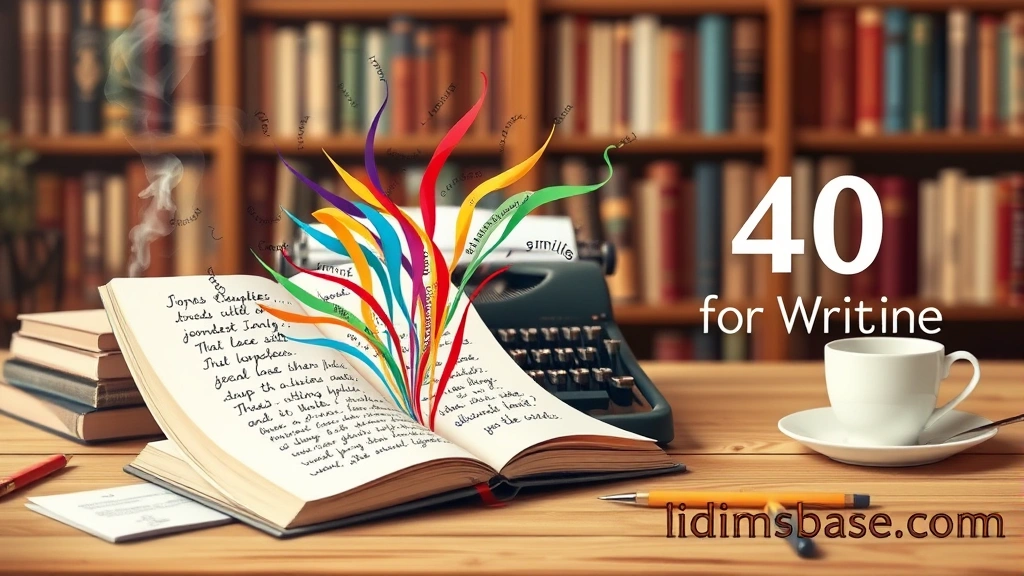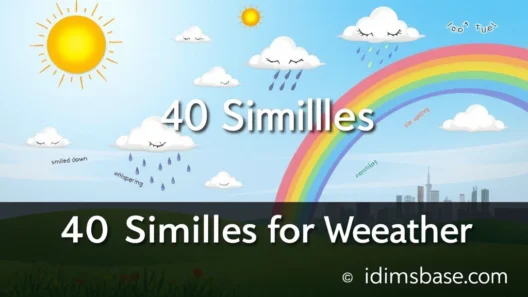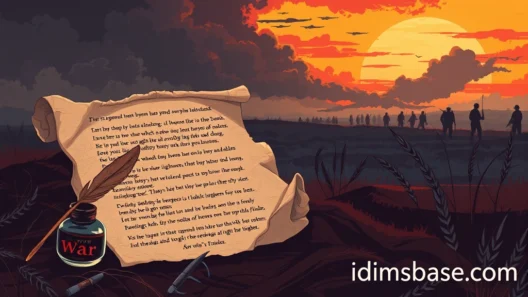Have you ever felt like your words are just… there? Like they're not quite dancing off the page or painting a vivid picture in your reader's mind? Well, you're in for a treat! Writing, at its heart, is about connection, and what better way to connect than through vibrant, relatable imagery?
Today, we're diving into the wonderful world of similes – those clever comparisons that make your writing sparkle. Think of them as the secret sauce that elevates your prose from good to unforgettable. Ready to sprinkle some magic on your paragraphs? Let's go!
Why Similes Are Your Writing Superpower
Similes are like little bursts of understanding. They take something complex or abstract and make it instantly relatable by comparing it to something familiar. This isn't just about sounding fancy; it's about clarity, engagement, and making your reader feel what you want them to feel.
Using similes is like giving your reader a pair of special glasses that let them see your world exactly as you imagine it. They paint pictures, evoke emotions, and add layers of meaning that plain language simply can't.
The Art of Comparison: What Makes a Great Simile?
A great simile is like a perfectly brewed cup of tea – it's comforting, familiar, yet has a distinctive flavor that lingers. It should be:
- Original: Avoid clichés like "busy as a bee." Strive for fresh comparisons.
- Relevant: It should genuinely enhance the meaning of what you're describing.
- Clear: The comparison should be easy to understand, not more confusing than the original idea.
- Evocative: It should conjure an image or feeling in the reader's mind.
40 Similes to Ignite Your Writing

Get ready to infuse your sentences with life! Here are 40 similes, crafted to inspire and empower your writing. Pick and choose, mix and match, and even let them spark your own unique creations!
- Writing is like weaving a tapestry: each word a thread, each sentence a pattern, creating a rich, intricate whole.
- Your first draft is like a messy garden: full of potential, but needing a lot of weeding and tending.
- Editing is like sculpting: chipping away at the excess until the true form emerges.
- A perfect sentence is like a well-tuned instrument: every note in harmony, producing a beautiful sound.
- Finding the right word is like unearthing a hidden gem: rare, precious, and dazzling.
- Writer's block is like a thick fog: obscuring your path, making it hard to see where to go next.
- Ideas are like butterflies: beautiful, fleeting, and sometimes hard to catch.
- Storytelling is like building a bridge: connecting your world to your reader's.
- A strong opening is like a welcoming embrace: drawing the reader warmly into your narrative.
- Dialogue is like a tennis match: quick, back-and-forth, with a lively rhythm.
- Pacing is like a river's flow: sometimes gentle and meandering, sometimes rushing and turbulent.
- Character development is like nurturing a plant: slowly growing, branching out, revealing its true nature.
- A plot twist is like a sudden gust of wind: changing the direction of everything in an instant.
- Research is like detective work: piecing together clues to solve a mystery.
- Formatting is like arranging furniture: making sure everything is in its proper, pleasing place.
- Reading your work aloud is like hearing your own song: revealing its true melody and rhythm.
- Feedback is like a mirror: showing you angles and perspectives you might have missed.
- Publishing is like launching a ship: sending your creation out into the wide, wide world.
- A compelling argument is like a sturdy chain: each link strong, leading to an undeniable conclusion.
- Descriptive writing is like painting with words: using vivid colors and textures to create an image.
- Humor in writing is like a burst of sunshine: brightening the mood and bringing warmth.
- Suspense is like a tightening spring: building tension with every turn.
- Poetry is like a whispered secret: intimate, profound, and deeply resonant.
- A well-structured essay is like a grand building: solid foundation, clear sections, and a strong roof.
- Revision is like a second chance: an opportunity to make things even better.
- Your voice as a writer is like your unique fingerprint: distinct, personal, and unmistakable.
- A powerful metaphor is like a lightning bolt: striking with sudden, illuminating clarity.
- Word choice is like selecting spices: each one adding a distinct flavor to the dish.
- Writing a novel is like running a marathon: a long, challenging journey, but incredibly rewarding.
- Creating an outline is like drawing a map: guiding you through your narrative journey.
- Show, don't tell, is like showing a movie instead of just telling the plot: letting the reader experience it directly.
- Grammar is like the skeleton of language: providing the essential structure.
- Punctuation is like traffic signals: guiding the reader through the flow of your sentences.
- A compelling hook is like a baited line: irresistible to the reader.
- Overcoming a difficult writing challenge is like conquering a mountain: exhausting but ultimately exhilarating.
- Your imagination is like an endless well: constantly supplying fresh ideas.
- A story's climax is like the crest of a wave: the peak of intensity before the descent.
- Writing consistently is like building a muscle: requiring regular exercise to strengthen.
- Connecting with your audience is like finding a kindred spirit: a deep, mutual understanding.
- The joy of writing is like pure magic: transforming thoughts into tangible worlds.
Key Takeaways
You've just explored 40 fantastic ways to make your writing sing! Remember these core ideas:
- Similes enhance clarity and engagement. They make complex ideas easy to grasp.
- Originality is key. Strive for fresh comparisons that surprise and delight.
- Practice makes perfect. The more you experiment with similes, the more naturally they'll flow.
- Your unique voice matters. Let your personality shine through your comparisons.
Frequently Asked Questions (FAQ)
What is a simile?
A simile is a figure of speech that directly compares two different things, usually using the words "like" or "as." Its purpose is to make a description more vivid, imaginative, or understandable. For example, "The moon was like a silver coin."

How do similes differ from metaphors?
The main difference is that similes use "like" or "as" to make a comparison, while metaphors state that one thing is another without those connecting words. For instance, "The moon was a silver coin" is a metaphor. Metaphors are a direct statement, while similes are a direct comparison.
Why are similes important in writing?
Similes are incredibly important because they add depth, imagery, and emotion to your writing. They help readers visualize what you're describing, connect with your story on a deeper level, and make your prose more memorable and engaging. They transform abstract ideas into concrete images.
Can I use similes in all types of writing?
Absolutely! Similes are versatile and can be used in almost any type of writing, from creative fiction and poetry to non-fiction, essays, and even business reports (when used appropriately to clarify a point). They add a touch of flair and clarity.
How can I come up with my own unique similes?
To create your own similes, try these tips:
- Observe the world around you: Pay attention to details, textures, sounds, and feelings.
- Think outside the box: Don't settle for the first comparison that comes to mind.
- Consider your senses: How does something look, sound, smell, taste, or feel?
- Brainstorm: List different things that share a quality with what you're describing.
- Read widely: Notice how other writers use similes and draw inspiration.
The key is to connect seemingly unrelated things in a meaningful way.
Are there any common mistakes to avoid when using similes?
Yes! A few common pitfalls include:
- Using clichés: Avoid overused comparisons like "light as a feather" or "strong as an ox."
- Making confusing comparisons: Ensure your simile actually clarifies, rather than obscures, your meaning.
- Overusing them: Too many similes can make your writing feel forced or cluttered. Use them strategically.
- Inconsistent tone: Make sure your similes match the overall tone and mood of your writing.
Always read your similes aloud to see if they flow naturally.
You now have a powerful toolkit of similes to elevate your writing! Which one resonated with you the most? Share your favorite, or even better, create your own unique simile in the comments below. Let's make the world a more vividly described place, one brilliant comparison at a time!







